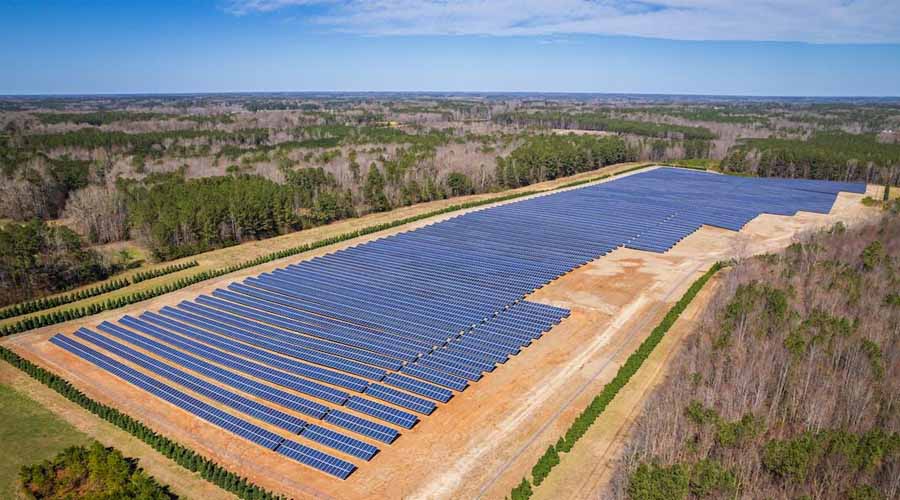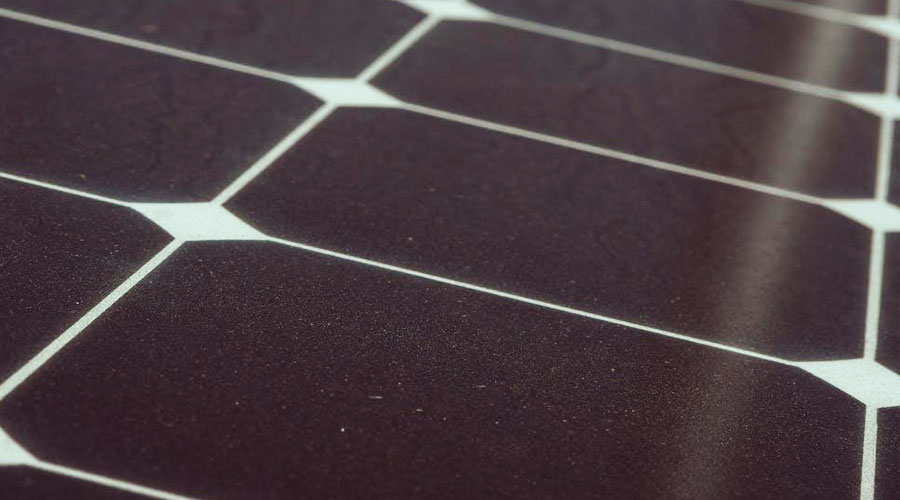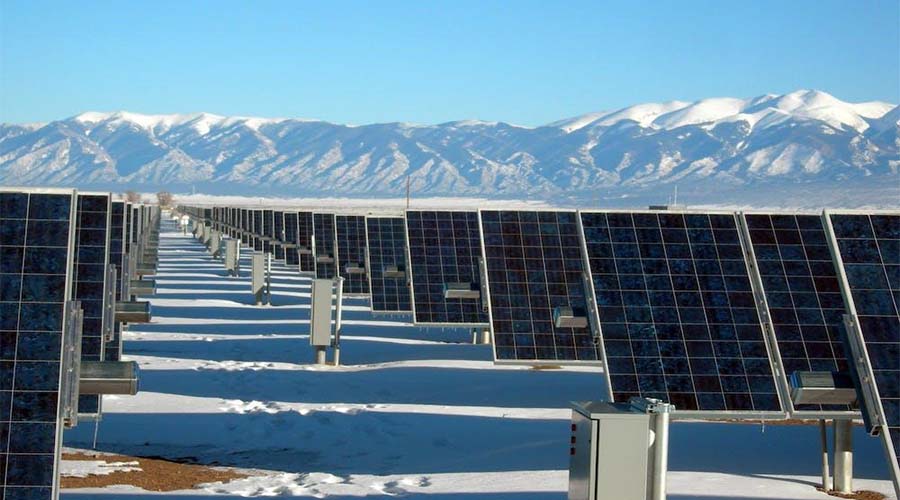The Ultimate Guide to Bifacial Solar Panels
Bifacial Solar Panels Overview: Efficiency, Advantages, Cost, and Installation
Are bifacial solar panels better than traditional panels? Learn all about bifacial solar panels and whether or not they’re the right choice for your solar needs in this comprehensive guide.
In this article, we will discuss:
- What Is A Bifacial Solar Panel?
- Bifacial Solar Panels Efficiency: Bifacial Solar Cell Structure
- Bifacial Solar Panels Advantages And Disadvantages
- Bifacial Solar Panels Cost
- Are Bifacial Solar Panels Better Than Other Options?
- Are Bifacial Solar Panels Worth It?
- How To Install Bifacial Solar Panels: Bifacial Solar Panel Installation?
- Why Choose Bifacial Solar Panels?
What Is a Bifacial Solar Panel?

Bifacial solar panels are an innovative solar technology that has been gaining traction in Canada in recent years. In fact, the International Technology Roadmap for Photovoltaic (ITRPV) predicts rising demand for crystalline silicon (c-Si) bifacial solar cells and modules in the global photovoltaic market throughout the coming decade.
By 2028, they are expected to account for over 35% of the market share. This upward trajectory signifies the increasing recognition and adoption of bifacial PV technology as a key player in the global renewable energy sector.
In this comprehensive guide, we’ll take you through the ins and outs of bifacial solar panels, discussing their efficiency, advantages, costs, installation advice, and more. First, let’s dive into what makes bifacial modules unique – double-sided solar panels with the ability to generate higher levels of electricity.
Bifacial Solar Panels Efficiency: Bifacial Solar Cell Structure
Some manufacturers claim that bifacial solar panels can produce almost double the amount of power that standard panels produce. However, according to the latest research, the actual figures are just a bit lower, with the U.S. Department of Energy stating that bifacial modules can improve solar system outputs by 10%-20% (which is still a significant amount). In specific applications, such as fixed-tilt systems, that number increases up to 30%. How do bifacial modules achieve this? They feature a distinct solar cell structure that differs from traditional solar modules.

Bifacial Solar Cell Structures
The bifacial solar cell structure sets itself apart by incorporating a dual-sided design that can capture sunlight from both the front and rear sides, harnessing reflected light from the surface beneath the panel. This particular property optimizes energy production, making the most of the available sunlight throughout the day.
In addition, the use of transparent back sheets or glass allows for better light penetration and improved durability compared to traditional solar panels. This forward-thinking design not only enhances the efficiency of solar energy generation but also offers a potentially more robust and long-lasting solution for renewable energy seekers. Here are some of the key points about bifacial solar cell structures you need to know:
● Both sides of the cell feature active layers, leading to increased energy conversion.
● The unique junction structure allows power generation from the front and rear sides.
● Leading light absorption technology maximizes sunlight capture.
● Transparent passivation layers on both sides improve performance.
● The layered design supports dual-sided energy generation.
● Lower shading losses contribute to higher overall efficiency.
● Custom anti-reflective coatings enhance light absorption for each side.
PERC & Bifacial Panels

Although bifacial modules were developed over 50 years ago, with their origins being in the Soviet Space Program, it really wasn’t until passivated emitter rear cell (PERC) technology came around that they became known for their higher efficiency ratings and real-world use case potential. PERC panels are a specialized type of silicon-based solar cells that feature an added layer on the rear side. This supplementary reflective layer has the ability to redirect unabsorbed light, sending it back through the n-type and p-type junctions to produce extra energy.
The breakthrough in PERC panel technology, with its added reflective layer, has paved the way for the growing popularity of bifacial solar panels. By adopting the idea of redirecting unused light, bifacial panels enhance energy production by capturing sunlight on both the front and rear sides.
Bifacial Solar Panels Advantages and Disadvantages
Now that you know more about the latest technology and innovation behind bifacial panels, we will weigh the benefits and drawbacks of using bifacial modules in your solar project.
Disadvantages of Bifacial Solar Panels
It took nearly 40 years for bifacial panels to develop from their first iteration into becoming a true market-ready solution. They rose to prominence in the 2010s, despite being demonstrated as early as the 1970s in the USSR. So, as a relatively recent innovation that features a more involved production process compared to traditional PV panels, bifacial solar technology typically comes with higher price tags.
However, when factoring in the increased energy savings, it’s possible that bifacial panels’ efficiency can quickly offset the initial costs of installation. Here are some of the other potential drawbacks to consider:
The design of bifacial solar panels restricts their suitability for certain locations, as the double-sided cells are less compatible with standard rooftop installations.
To achieve maximum energy output, these panels usually require open spaces with ample sunlight.
Bifacial Solar Panels Advantages

It’s not all doom and gloom when it comes to bifacial technology. Here are some of the critical benefits of bifacial solar panels:
● Capacity to produce electricity from reflected light that travels through the panels.
● Many bifacial panels come with a performance warranty that extends up to 30 years, surpassing the standard 25-year warranty of traditional solar panels.
● The glass in bifacial panels helps protect against hazards related to UV exposure and moisture infiltration.
● The high-strength glass in bifacial panels ensures the modules remain safe from chemical corrosion.
● Bifacial solar panels typically do not have aluminum frames, eliminating the need for grounding (which can save both materials and time during the installation process).
Bifacial Solar Panels Cost
We already touched on the fact that bifacial solar panels are usually a bit more expensive than their monofacial counterparts. For utility-scale projects, consider this stat from international consulting firm Wood Mackenzie’s Q4 2021 U.S. solar market report: The typical price for a 72-cell PERC bifacial module is approximately $0.38 per watt. This is about $0.03 per watt, more expensive than the cost of a 72-cell mono PERC module.
Though, when it comes to residential projects, bifacial panels have become considerably less expensive than what they used to cost. Why? Manufacturers have started adopting more affordable c-Si, PERC, and nPERT technologies into their production processes. This has resulted in residential bifacial solar projects becoming increasingly popular across regions such as Canada, the U.S., Europe, and MENA.
For the average bifacial residential system, you can expect to pay somewhere in the range of $6,000 to $12,000 for end-to-end installation – the specific cost depends on the size of your system, the manufacturer of the panels, and related variables.
Are Bifacial Solar Panels Better Than Other Options?

Bifacial solar panels have some distinct advantages over traditional monofacial solar panels, making them an attractive option for specific applications. However, it's essential to consider the context and individual requirements of each project to determine if bifacial solar panels are indeed the better choice.
Bifacial Solar Panel vs. Monofacial
Comparing bifacial solar panels with monofacial panels, some key differences stand out. Bifacial panels capture sunlight on both sides, increasing energy production, whereas monofacial panels only absorb sunlight on the front side. Moreover, bifacial solar panels often come with an extended performance warranty and better protection against environmental hazards. Yet, monofacial panels are generally more affordable and compatible with a broader range of installation locations, making them a popular choice for residential and smaller-scale projects.
Are Bifacial Solar Panels Worth It?
Deciding whether bifacial solar panels are worth the investment depends on the specific needs and objectives of the project.
For large-scale installations, such as solar farms or commercial projects with ample space and optimal sunlight exposure, bifacial solar panels can significantly boost energy production, justifying the higher initial costs. However, for residential rooftop installations with limited space and less-than-ideal sunlight conditions, traditional monofacial panels may offer better value for money. Here are several more advantages of bifacial modules to keep in mind:
● Improved energy production in regions with high albedo (i.e., large amounts of light-coloured terrain/features), as the bifacial panels can capture more reflected sunlight from surfaces like snow or light-coloured ground cover (e.g., desert). High albedo can also apply to materials such as concrete, glass, or even grass.
● Enhanced performance during cloudy days or low-light conditions, as the rear side of the panel can absorb diffused light.
● Lower temperature coefficients, resulting in better performance in high-temperature environments compared to monofacial panels.
● Aesthetically pleasing design due to the absence of an aluminium frame, making them a popular choice for building-integrated photovoltaic (BIPV) projects.
● Potential for reducing soiling losses, as the rear side of the panel can still generate energy even if the front side becomes dirty.

How to Install Bifacial Solar Panels: Bifacial Solar Panel Installation?
Installing bifacial solar panels requires careful planning and attention to detail, ensuring optimal performance and longevity. Begin by selecting a suitable location with ample sunlight exposure and minimal shading. Next, determine the ideal mounting structure and tilt angle to maximize sunlight absorption on both sides of the panel. It is essential to work with a professional solar installer who has experience with bifacial solar panel installations to guarantee a seamless and efficient process. Here are some additional bifacial solar panel installation tips to consider:
● Plan for adequate spacing between rows of bifacial panels to minimize shading and make certain of maximum sunlight exposure on the rear side of the panels.
● The bottom-most edge of the installation should be at least 101cm off of the ground, according to a 2010 research paper by the Institute of Electrical and Electronics Engineers.
● Consider using a vertical or ‘portrait’ alignment. This will decrease the level of blocking of the back panel by the rack setup. In winter environments, this will also facilitate snow to more easily melt and/or move off of the panels due to an increased amount of momentum (allowing the panels to potentially absorb more sunlight compared to a horizontal alignment).
● Assess the structural integrity of the mounting surface, such as a rooftop or ground mount system, to support the weight of bifacial solar panels.
● Consult with a professional solar installer to determine the optimal height above the ground for bifacial panels for your particular installation to maximize energy production.
● Regularly monitor and maintain the bifacial solar panel system to ensure peak performance and a long lifespan. This includes cleaning the panels and inspecting the mounting structure for any signs of wear or damage.
Why Choose Bifacial Solar Panels?
Bifacial solar panels have the potential to revolutionize the solar energy industry with their increased efficiency and distinctive design. While they may not be the best choice for every project, they offer a promising and innovative solution for large-scale and specific applications.
Before you start your search for bifacial solar panels for sale, here’s a quick recap of what we covered:
● Bifacial solar panels are double-sided and feature increased efficiency and higher energy production compared to monofacial panels.
● Bifacial modules feature a unique solar cell structure: They capture sunlight from both the front and rear.
● PERC technology has advanced bifacial modules’ adoption rates.
● Advantages of bifacial panels include extended warranties, UV and moisture protection, and no aluminium frames.
● Key disadvantages include a higher potential cost and location limitations.
● Bifacial modules are perfect for high albedo environments, feature low-light performance, temperature tolerance, improved aesthetics, and reduced soiling losses.
● Bifacial modules cost $0.03 more per watt for utility-scale projects.
● Bifacial vs. Monofacial: Consider project context, needs, and objectives.
● Whether or not bifacial panels are worth it depends on project specifics and sunlight conditions.
● Installation will typically require professional help and careful planning to maximise performance.
As bifacial technology continues to advance and prices become more competitive, bifacial solar panels are likely to become an increasingly popular option for clean and renewable energy generation.
Interested in learning more about other solar-related topics? Check out our main blog page and browse our wide selection of articles covering everything from solar batteries to how solar panels work. If you’re curious to learn more about solar power’s viability in Canada, click here to read our blog on the topic.
Related articles:
Solar Panels For RV: Make Your RV Self-Sufficient
RV Solar Panels: The Definitive Cheat Sheet
How Much Power Does A Solar Panel Produce?






